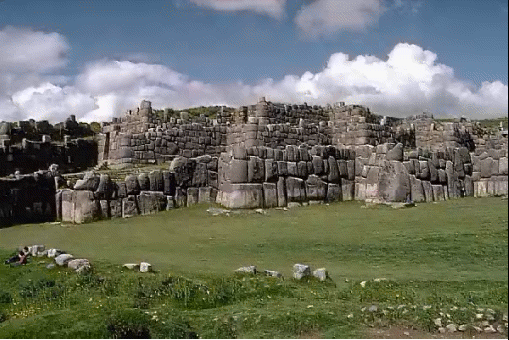
The fortress of Sacsahuaman was built by the Inca in the 15th century on a hill northwest of their capital at Cuzco, in Peru. The fortress takes the form of a series of zigzag retaining walls built of huge stones, some weighing several tons. Such fortresses, called pucaras, were frequently built above population centers in the Andes to serve as refuges for the populace in case of attack. Spanish sources suggest that Sacsahuaman was also an important storage center, and it may have had religious significance as well. Construction is usually attributed to the ruler Pachacuti, but it is unlikely that the huge fortress was completed in a single reign.
No comments:
Post a Comment